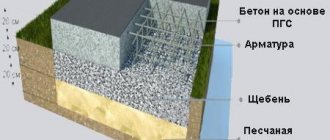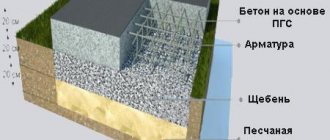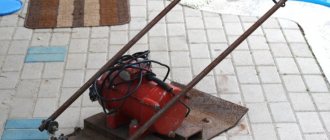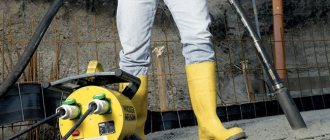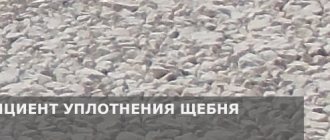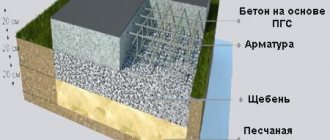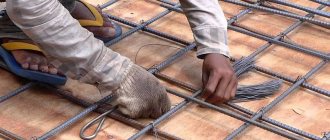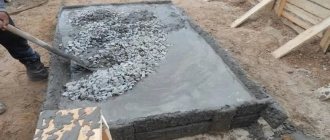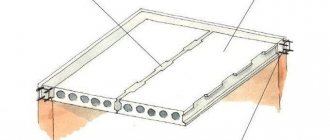Compaction of soil and other bulk materials is an event that constantly accompanies various construction works. Previously, compaction was done manually, but now the vibratory compaction method is used using vibrating plates. Manufacturers offer a wide selection of equipment of this type, equipped with diesel, gasoline or electric engines. When starting to operate the equipment, in order to achieve the result of the required quality, it should be taken into account that the compaction of different materials has its own characteristics. In order for the sealing mechanism to last a long time, it must be operated correctly. At the same time, following safety precautions will help avoid injury.
Device selection criteria
Several conditions influence the quality of work. To obtain an excellent result, it is necessary to take into account all the properties of the model and select a site compactor, focusing on the tasks facing the unit.
Characteristics by mass
This is the main quality of a vibrator for compacting any surface, which affects the effectiveness of the task at hand.
You need to pay special attention to this when purchasing or making a homemade vibrating plate. A self-assembled device is often skewed towards one feature, so it is necessary to understand all the characteristics of the mechanism
The weight of vibratory ramming devices is distributed as follows:
- Lightweight models weighing up to 75 kilograms are suitable for working on surfaces with a small (up to 15 centimeters) soil layer thickness: paths in the garden, local areas for laying tiles or rugs.
- Medium ones with a draft thickness of up to 25 cm are quite versatile. They can cope with light work with equal efficiency and help with laying asphalt and paving slabs. Their weight is in the range of 75–90 kg.
- At a construction site, when pouring the foundation and strengthening the bottom of communication ditches, as well as laying several layers of asphalt pavement, medium-heavy vibrating machines weighing up to 140 kilograms and a compaction depth of up to 60 centimeters are useful.
- Heavy slabs perform the same work as the previous ones and weigh more than 140 kg.
The balance between the mass of the sole and the power of the power plant is the main thing that influences the device’s performance of its tasks. A skew towards the heaviness of the slab will drown the installation in the ground; low weight with excessive pressure on the base will not achieve the required surface density. The optimal ratio of the mass of the plate is 100 kilograms to the drive power of 5 horsepower.
Additional criteria
In addition to the main ones, there are also characteristics that need to be paid attention to. They have no less impact on the efficiency and control of the mechanism:
- Vibration strength.
- Sole dimensions.
- Engine power.
- Type of fuel.
The pressure force of the slab per unit area being processed depends on the size of the base.
The fuel that vibratory rammers consume is traditional - gasoline, diesel and electricity. All professionals recognize the advantage of a stove that works with a gasoline engine. They are unpretentious to working conditions, their cost is in the middle when compared with analogues. Diesel units are the most expensive and noisiest of all. The only advantage is the economical engine. An electric tool is the cheapest; in terms of performance, it does not lag behind gasoline ones, but is connected to the electrical network.
Light vibrators have the most balanced power. The range of work they perform does not imply serious technical characteristics. A motor with power corresponding to the nature of the work and the weight of the sole will move on its own, and the operator will only have to set the direction.
Useful features
All vibration installations have additional devices that make work easier or provide additional protection. In order to move the device to a new place of work, the presence of wheels and a folding handle will make this task performed without unnecessary effort.
Various covers will protect the machine from particles from the compacted surface. The slab wetting system is effective when rolling hot asphalt. Without it, it will stick to the top layer.
Work to strengthen the bottom of trenches or compact soil in narrow places is practically impossible without ensuring reverse movement.
Control handle and vibration damping system
During operation, thanks to the front location of the eccentric and the resulting vibrations, the platform with the engine installed on it begins to move along the surface independently. But to set the correct direction of movement, a control handle is needed.
According to its design, it can have one or two inclined posts with a transverse handle-crossbar.
It is recommended to install a vibration damping device in the upper part of the handle so that vibrations are not transmitted to the hands during operation. You can use springs as protection; the stand itself can be made of two pipes, one of which will go inside the other. The springs are fixed by steel rings installed on the pipes.
If you have the financial opportunity, then instead of a homemade spring structure, you can install silent blocks from a passenger car. This will provide sufficient vibration damping, and the structure itself will be less noisy.
Purpose of vibrating plates
A similar mechanism is used for compacting crumbly areas of earth and building materials, as well as uncured surfaces of asphalt and concrete. It is especially effective in small areas and sidewalks, as well as where heavy equipment cannot enter.
The use of this device will greatly facilitate manual labor in homestead or country landscape construction. The easiest way to compact the soil on a garden path or a small parking lot near a house is by mechanized method.
The tamping vibrodynamics will also help out during excavation work on laying underground communications, when you need to compact the soil at the bottom of the trench.
This device operates due to vibrations that occur during the rotation of a flywheel mounted on eccentrics:
- By displacing the ballast through the drive, the vibration created is transmitted to the iron base - the sole.
- The heavier it is, the stronger the oscillatory process and the denser the compaction.
Possibility of reverse movement
Movements of a homemade vibrating plate made as described above are only possible in one direction. Therefore, after walking a certain distance, you have to turn it around and only then move in the opposite direction. This reduces the speed of work and requires additional physical effort on the part of the operator.
In order to provide the vibration machine with the ability to reverse movement, it is necessary to install a device that changes the direction of rotation of the motor. After its installation and connection, the vibrating plate will be able to move in two directions.
When the edge of the treated area is reached, the operator turns off the engine and starts rotating it in the opposite direction. The vibrator eccentric will also become reversible and provide the machine with a return movement.
Advantages of buildings on a sand bed
Among the numerous advantages that are worth noting when using sand cushion technology, it is almost impossible to single out the main and minor ones. Each individual characteristic makes its own unique “contribution” to the strength and reliability of the entire structure. The first and obvious advantage of a sand cushion is its low cost and simplicity of all work on the device, which will require a minimum amount of time.
A house with such a foundation can be built on almost any soil - weak, watery or heaving. At the same time, the service life of the building can be significantly increased if high-quality geotextiles are placed under the cushion, and a high-quality drainage system is provided at the site where construction is taking place. As a result of this, such common problems with a new home will be eliminated, such as:
- the formation of cracks in the walls and the foundation itself, caused by uneven shrinkage of the building;
- freezing of the foundation and, as a result, an increase in the cost of heating the house;
- accumulation of water in basements, often observed in houses located in areas with high groundwater levels, especially in spring;
- constantly high humidity, which is observed throughout the house, and not just in the basement, which leads to the formation of mold, damage to furniture, and various allergic reactions among residents;
- the need to install a serious supply and exhaust ventilation system, the cost of installation and operation of which can amount to quite decent amounts.
Tamping accessories
Made of metal, it weighs from 5 to 10 kg. It consists of a handle and a base (“paw”) - a plate measuring approximately 20 x 25 cm or a channel (the smaller the dimensions of this part of the device, the greater the impact force). The handle of the tool is straight (in the form of a pipe) or T-shaped, with two handles on the sides. If necessary, a manual tamper with a channel can be made heavier by filling it with cement.
If you need to save money, then it’s easy to make the device yourself. Two manufacturing options:
- Make a handle from a heavy wooden beam about 1 m long and nail a “paw” from a strong board to it from below.
- Buy a separate ready-made plate (costs about 1000 rubles) and attach it to a shovel handle or a metal stick.
To compact soil and bulk materials, including sand, in a limited space, a “vibrating foot” is used. The engine of this device runs on gasoline or diesel fuel. At the base of the apparatus there is a “heel” plate with a width of 15 to 30 cm and a length of about 33 cm. Vibratory rammers also differ in power. The principle of operation is based on a vertically directed force, like a manual device, but the efficiency is much greater. This type of equipment is used on sites where it is impossible to operate large-sized equipment: vibratory plates and vibratory rollers.
For work over a large area, subject to the possibility of free movement, tamping using a vibrating plate is suitable. This apparatus consists of a motor, a basket or “shoe” and a guide handle. The unit moves back and forth, transmitting strong mechanical vibration (vibration) to the sand particles, due to which compaction occurs.
Types of equipment for soil and bulk materials with a slab base:
- gasoline;
- diesel;
- hydraulic;
- electrical;
- with remote control.
Vibrating plates vary in weight. The lightest ones are suitable for sand.
For the largest volumes of work, vibratory rollers are used. Their types:
- with manual control due to the guide handle;
- self-propelled with an operator's cabin, single-drum (wheeled at the rear);
- with a two-roller cabin;
- trench with remote control.
The design of a high-quality vibratory roller allows compaction to be carried out along the edges of the site, that is, the use of additional equipment (manual or vibratory rammer) is not required.
The price for the services of professional builders to compact sandy soil or sand backfill is from 90 to 600 rubles per m2. If the area that needs to be compacted is large, or we are talking about permanent work, then you need to compare these prices with the cost of the equipment. In many cases, it is advisable to purchase a device or rent one and do everything yourself.
| Type of device | Price, rubles |
| Manual rammer with straight handle and plate base | 1800 |
| Manual with T-handle and channel base | 2800 |
| Vibratory rammer | 27 500 |
| Vibrating plate | 21 000 |
| Manual vibrating roller | 270 000 |
| Vibratory roller with control cabin | 2 000 000 |
Depending on the type of equipment, either a vertically directed impact force or vibration transmitted from the roller shaft or the base of the slab acts. In any case, the technology does not include any secrets or complications.
In the first part, I talked about the design of floors on the ground, now I will move on to the practical part of implementing floors on the ground in a private house.
What it is?
A vibrating rammer is a multifunctional manual vibrating rammer used in construction to compact bulk materials and loose soils. In appearance, this device is a compact and mobile device, equipped with manual control.
Soil compaction using vibration equipment allows you to solve a number of important problems:
- prevent the process of soil shrinkage under the foundation;
- displace moisture and air from the soil structure.
- level and compact the base of the construction site;
When carrying out preparatory construction work, a vibratory rammer is used where large equipment cannot fit due to limited free space. Hand tools allow you to close narrow openings when laying pipes, in areas located near walls or corners of buildings, when constructing bike paths and laying curbs or sidewalk elements. Portable tools get the job done efficiently without damaging buildings or utilities.
The manual vibratory rammer consists of the following main parts:
- shaft with a special return spring;
- manual control system
- engine, which can be gasoline, diesel or electric;
- sealing sole;
- connecting rod with a special piston;
- cam-type eccentric mechanism;
A manual vibratory rammer can also be called a vibratory rammer, since the area of the compacting sole of this tool is small and amounts to 50-60 cm². This compactness is necessary to reduce the weight of the equipment, but does not reduce the stability of the tool and allows you to develop the vibration force necessary for work. Despite its compact size, this equipment requires significant physical effort from the operator to move the device and maintain its stability in an upright position during operation.
In addition, the worker must be exposed to severe vibration loads, which have a negative impact on health. The effectiveness of a manual vibratory rammer is determined by the force of the impacts and their frequency of 1 minute.
Features of self-installation of a sand cushion
Before starting work, it is necessary to determine several points on which the quality of the resulting base directly depends:
- the thickness of the pillow must be at least 200 mm;
- the most successful option is the trapezoidal shape of the pillow;
- The optimal base thickness is considered to be a value that does not exceed the width of the foundation by more than 3 times.
Installation of a pillow under the foundation
All work on installing a sand cushion can be divided into several main stages.
- Careful marking of the site, carried out in accordance with the selected foundation parameters. All measurements and marks should be verified as accurately as possible, using a tape measure and a building level.
- In strict accordance with the intended lines, a pit or trench is dug to a depth slightly exceeding the freezing point of the soil.
- Be sure to level the bottom of the trench or pit and compact it as much as possible.
- Sand is poured in “thin” layers, and the width of each of them should not be more than 20 cm in width.
- Before compacting the sand, it must be moistened with water, without, however, allowing it to be excessively moistened. You can check “readiness” in a simple way - you won’t be able to form a lump out of optimally moistened sand.
- Each layer is compacted separately. When performing work in the summer at high ambient temperatures, it is necessary to constantly moisten the layers of sand, since the moisture evaporates from it quite quickly.
- In order to ensure high-quality compaction of sand for the foundation, it is best to use a special vibrating plate. Since its cost is quite high and its scope is limited, it would be most convenient to rent it.
- If the use of such a tool is difficult or impossible for some reason (lack of power supply, for example), manual tamping with your own hands can also be done using homemade devices. For example, you can attach side handles to a round beam (log) and roll each layer of poured sand.
It should be borne in mind that if you provide special drainage in heaving soil, this will eliminate the possibility of the sand cushion being flooded with water in the off-season, which directly affects the durability of the foundation and the entire structure as a whole.
Sand cushion for the foundation - when it is needed
Before starting construction, it is necessary to assess not only the condition of the soil in the area where the house is being built (bearing capacity, proximity of underwater waters), but also the climate conditions, as well as the total weight of the structure. It is mandatory to compact heaving soil, which is significantly deformed during the process of freezing and thawing. If you make a mistake with the choice of material for installing a slab under the foundation, most likely the building will shrink greatly, which will lead to the formation of cracks in the walls and the foundation itself. In addition, if the soil in the construction area has a high bearing capacity and the groundwater level is extremely low, you can do without creating a sand cushion.
Of all the materials that are used to create a pillow, sand is the most acceptable. It not only allows you to save a decent amount compared to a slab of crushed stone or concrete, in addition, compacting sand with your own hands is quite acceptable - for example, working with crushed stone is much more difficult. There is only one limitation on the construction of a sand cushion - heavy buildings cannot be built on it (apartment buildings, shopping centers), but for private low-rise construction it is an almost ideal material.
sand cushion
A properly created sand cushion has numerous advantages:
The foundation created using sand fully complies with all standards used in low-rise construction. Complete protection of the entire building from the negative influence of groundwater. Creating a perfectly level site for construction without the use of complex and expensive technologies. Possibility of carrying out all work on our own. The cost of this important stage of work is quite affordable.
Wooden surface
The surface is thoroughly cleaned of construction debris and then examined for defects. All irregularities and cracks are sealed with cement. A level base is prepared for backfilling by measuring the zero height level with a laser level.
Notches are made on the walls that indicate the height points of the floor. The beacons are then connected to each other and placed. The base of the beacons should protrude slightly from the floor. The prepared material is backfilled on top of the beacons to the height marking level. You need to compact the sand mixture well so that the logs will then lie flat on top and not deviate in level.
The process is quite long, but it is advisable to compact the surface well so that the boards do not move apart or sag. Some shrinkage is acceptable and even inevitable, but the quality of the leveling will determine the longevity of the wood flooring.
Leveling the floor with sand is easy. The technology consists of several stages, following which you can achieve a good quality rough surface.
Safety precautions at work
Compaction of soil with a vibrating plate must be carried out in compliance with safety precautions. Among the many recommendations, the following basic rules can be highlighted.
- During work, it is necessary to use personal protective equipment
: appropriate clothing and shoes, glasses, headphones, and a hat. - Before starting operation, you need to check the equipment you are using for external damage: if any, they should be eliminated first.
- It is prohibited to leave operating equipment unsupervised; the operator must be positioned behind it and promptly move behind the unit.
- Every 40 minutes you need to organize a break of about 10 minutes to prevent operator fatigue.
- You cannot further speed up the mechanism by applying additional force.
- If you need to work on an inclined surface
(when the angle does not exceed the norm), then the operating personnel must stand above the unit, moving from top to bottom. - It is prohibited to operate the technical device near sources of explosive or flammable materials.
- When overturning a vibrating plate
, it should first be turned off and only then put into working position. - The unit can be deployed with one hand.
- To prevent injury, you should keep your feet and hands away from the working base of the stove.
- If you collide with any obstacle, you need to stop the unit, and then eliminate the obstacle and possible damage caused by it.
- It is required to be no closer to the edges of trenches, pits, ravines and other excavations than the minimum permissible distance, or better yet, further away.
- It is strictly prohibited to allow people under the influence of drugs, alcohol, or psychotropic drugs to work.
It should be taken into account that the higher the center of gravity of the vibration equipment (and the smaller the support area), the easier it can tip over. This is very dangerous for the operator
You should also be very careful when turning on equipment that is not equipped with a soft start function.
The use of a vibrating plate is required when carrying out all construction activities that involve compacting loose soils. It is necessary to take into account the characteristics of the materials being rammed in order to achieve a high-quality result. It is necessary that the maximum depth of the poured layer corresponds to the thickness that the operating unit is capable of compacting. In any case, safety must come first. Failure to follow these simple rules along with inattention can result in serious injury.
To give the building maximum stability, you need to carefully compact the sand at the base of the foundation - this will protect the building from water and shrinkage.
Such a cushion can be made of concrete or crushed stone, but most builders choose sand.
High-quality sand compaction is a guarantee of a durable foundation.
Before compacting begins, the thickness of the future cushion, which will be necessary for the foundation of the building, is determined. The sand layer can be from 10 to 30 mm, but this factor completely depends on the weight of the future building - the greater the weight, the thicker the layer should be. If the sand base is made for a road or site, the thickness should be about 150 mm.
Homemade vibrating plate
Factory installations for tamping cost a lot. Therefore, some craftsmen prefer to make a vibration compactor themselves. This process will require welding skills and a small set of tools.
Advantages of homemade products
The cost of a device made independently is much lower than that of ready-made equipment. In appearance, it resembles a walk-behind tractor with a vibration motor. Quality and durability are ensured by the simplicity of the design. The efficiency of such a vibrator is no lower than that of a purchased one, and sometimes even higher. Advantages of a homemade vibrating plate:
- Full compliance with the operating conditions for which it is manufactured allows you to perform the assigned functions with high quality.
- The owner chooses which vibrating plate to make: with an electric motor or an internal combustion engine.
- Everyone also worries about their own safety. Therefore, all the necessary protection systems will be provided and installed.
- Having your own device will allow you to choose the time and place of work according to your circumstances.
Selecting a traction device
First of all, it is necessary to decide what type of fuel to prefer. This could be a self-made 220 V vibrating plate, but its use will be limited. The diesel engine is too noisy and heavy, so it is preferable to go with a gasoline engine. Such a drive will allow compaction of earth, sand, bulk building materials, tiles and asphalt surfaces.
To ensure acceptable seal quality, a single or two-cylinder engine is suitable. There are many of them on the market. In the more expensive category, the most popular models are from Honda and Kipor, as well as cheap Lifan, DDE and Champion.
Materials and accessories
Everything you need to build a vibrating plate with a gasoline engine is usually available nearby or can be purchased inexpensively on the market. Materials to be used:
- Gasoline engine.
- A metal sheet measuring 0.80 by 0.45 meters and 8-0 millimeters thick.
- Two pieces of channel.
- 4 bolts for 12.
- The tube for the handle is selected according to the size of the palm.
- Shock absorbers from a car engine.
- 2 wheels.
As a last resort, there is a service such as tool rental. Renting the necessary equipment will be inexpensive. Equipment needed for work:
- Welding apparatus and electrodes.
- Angle grinder and discs for it.
- Drilling device (drill or machine).
- Hammer or small sledgehammer.
- Ruler, chalk or scriber, tape measure.
- Protective equipment: welder's mask, goggles, gloves.
Making a vibrating table
First of all, the working platform is made. The edges of the sheet metal must be bent 30-40 degrees relative to the ground. To do this, the surface of the plate must be sawed 10 centimeters from the edge, with a depth of no more than half its thickness. Then bend along the cut line with a hammer. The seams at the bends must be scalded for rigid fixation. This design of the sole will allow the future vibrating plate to slide along the surface rather than bury itself in it.
The most crucial moment is welding the channels to the sole. They need to be measured exactly according to the size of the slab and welded, focusing on the center - so that there is 70-00 millimeters between them. To prevent the stove from leading, you should not overheat the material being welded. To mount it, you need to mark the channel along the motor mount. You can simply attach it to the channel runners and mark the points with chalk or a marker. You can also measure these distances with a tape measure. After drilling the hole, the engine is placed in place and bolted.
Possibility of reverse movement
Movements of a homemade vibrating plate made as described above are only possible in one direction. Therefore, after walking a certain distance, you have to turn it around and only then move in the opposite direction. This reduces the speed of work and requires additional physical effort on the part of the operator.
In order to provide the vibration machine with the ability to reverse movement, it is necessary to install a device that changes the direction of rotation of the motor. After its installation and connection, the vibrating plate will be able to move in two directions.
When the edge of the treated area is reached, the operator turns off the engine and starts rotating it in the opposite direction. The vibrator eccentric will also become reversible and provide the machine with a return movement.
Peculiarities
Mechanized soil laying is not always possible. Before you start making a tamper, you should study the features of how the tool works with crushed stone and sand. Novice builders do not always understand why it is necessary to compact crushed stone, but there are several nuances here.
- Because crushed stone is produced by crushing larger stones, the resulting particles have different shapes and sizes. In this regard, during the laying of the underlying layer, the elements do not adhere tightly to each other. Thus, to achieve the required layer strength, another compaction is required.
- When compaction is completed, the thickness of the lined crushed stone is reduced. The preliminary thickness of such a base is determined by calculation, which takes into account the required loads.
- Compaction of crushed stone provides a stronger base that can withstand impressive loads. Interestingly, if the material is laid on rocky soil, compaction is not required - it is enough to level the gravel in places inaccessible to compaction.
Additionally, in the process of processing crushed stone material, declinging should be carried out - dividing the gravel into fractions. To do this, you will first need to lay out a layer of larger stones and compact it manually, then - material of the middle fraction, which will also need to be compacted. The topmost crushed stone layer should include fine particles. It needs to be leveled and tamped.
As for the specifics of using a tamper to compact sand, the procedure has a number of nuances that must be taken into account. To create a strong and durable foundation, it is recommended to use gravel-type material of medium or fine fraction. However, when constructing a monolithic structure, it is worth choosing river sand, which will also need to be compacted later.
To prevent erosion of the future foundation, it is necessary to line the bottom with geotextiles before filling the sand. The sand itself needs to be sifted to get rid of foreign impurities that could negatively affect the composition of the base.
Purchasing a unit
If you still decide to purchase a unit, you need to take into account both the main criteria and minor nuances that will make the work easier or increase its service life. However, we cannot fail to mention the manufacturers of vibratory ramming devices.
Equipment from European manufacturers is especially important. German technology is distinguished by its reliability and long service life. Even rental samples show good quality and speed of work. All equipment has a double safety margin. Wacker, Weber, Ammann, Bomag produce professional equipment.
Israeli Shatal and Czech NTC have fewer resources than the Germans, but they also turn out to be good workers at construction sites and on private property.
South Korean equipment from Jeonil Minery is not inferior to products from the Czech Republic or Israel. In the Asian market, this is the best offer among all vibration units.
Russian products from, Motoprom and SZPO are inferior to average European models in terms of convenience and functionality. However, modernization continues, and new, more advanced models appear on sale.
The Chinese, as usual, charge a price. Their products are only suitable for occasional, light-duty work. Among the mass of unknown manufacturers, the companies TEKPACK, MASALTA, DYNAMIC, CIMAR stand out.
Vibrating plates
A vibrating plate is a surface vibrating soil compactor designed for compacting non-cohesive or poorly cohesive soils and fills of insignificant thickness - from 10 to 30 cm. Vibrating plates of various capacities perform compaction of sand, gravel and crushed stone, as well as paving slabs and asphalt. A vibrating plate for soil compaction copes with compacting areas with a slope where the use of a large roller is difficult or impossible. Vibratory plates are rightfully in greatest demand among developers and are gradually replacing vibratory rollers.
Healthy! Sometimes vibrating plates are given an inaccurate name - surface vibrator. This misunderstanding is due to the fact that the operation of a surface vibrator resembles compacting sand with a vibrating plate. However, it has another area of application - compaction of thin-layer concrete pouring during monolithic construction. A surface vibrator is sometimes used to make homemade vibrating plates.
The quality of compaction depends on the level of soil moisture: with sufficient indicators, the soil becomes plastic and the compaction process proceeds faster. If there is a lack of moisture, the compacted layer is additionally shed with water; if there is an excess of it, wait until it dries. The humidity level is controlled by an electronic moisture meter.
| Soil type | Humidity level at maximum compaction, % |
| Sandy | 8 – 14 |
| Sandy loam | 9 – 15 |
| Loamy | 12 – 18 |
| Clayey | 16 – 26 |
Healthy! When compacting loamy and sandy loam bases with a vibrating plate, additional wetting of the working plate of the device is necessary to protect against soil adhesion.
Structure and principle of operation of a vibrating plate
The vibrating plate is equipped with an electromechanical eccentric, inside which unbalanced masses create mechanical vibrations. Using a belt drive, torque is transmitted from the engine to the eccentric shaft. Vibrations propagate to a metal plate (plate), which is in direct contact with the surface of the soil and causes it to vibrate. For convenience, the vibrating plate device is equipped with a handle for the operator.
Types of vibrating plates
Vibrating plates are classified by weight into:
- lightweight (up to 75 kg) – designed for landscape and finishing work, effectively compacting a layer of soil 10-15 cm thick;
- medium-heavy (from 90 to 140 kg) – provide a processing thickness of up to 35 cm; designed for layer-by-layer compaction;
- heavy (from 200 kg) – used as an alternative to vibratory rollers;
- universal (75-90 kg).
Depending on the type of engine, a vibrating plate for soil compaction can be diesel, electric or gasoline.
The most popular are gasoline models. They are economical and provide freedom of movement around the site and the ability to work at subzero temperatures.
Diesel vibrating plates are reliable and durable. Like gasoline ones, they are independent of the power source. Disadvantages are due to heavy weight, high noise levels and difficult operation in frosty weather.
Electric vibrating plates limit the working area by the length of the power cable, but are the most environmentally friendly. They are used in enclosed spaces with limited access to fresh air, where the use of gasoline models is unacceptable due to the risk of poisoning from exhaust gases.
According to the method of movement, vibrating plates are divided into:
Reversible. Such models are more maneuverable, but have a high price and heavy weight. As a rule, they are equipped with a diesel engine. The advantage of reversible vibrating plates is the possibility of reverse movement without turning the equipment. Therefore, they are indispensable for compacting sand and fill soil in narrow trenches.
The performance of vibrating plates is determined by:
- base area;
- operating frequency;
- vibration force;
- engine volume (for gasoline and diesel cars).
Asphalt crumbs: preparation and composition
Asphalt granulate is a recyclable material obtained by recycling old road surfaces. There are two production technologies:
- Worn road surfaces are cut off from the surface during road reconstruction using cold milling (layer-by-layer cutting of the road surface). The result is the so-called crumb from under the cutter.
- The second method: after dismantling, the material is crushed mechanically in a crushing and screening plant (crumb chips). The resulting mixture is scattered into fractions (large, medium, fine). This increases the homogeneity and further stability of the material.
The technological value of the material is determined by the presence of bitumen in it. It envelops the granules of the granular material, which improves the final characteristics of the granulate. The composition may include additions, for example, rubber or cement concrete crumbs.
The resulting asphalt crumb is a mixture of crushed stone, sand, gravel and bitumen; the proportions in each specific case depend on the composition of the original road surface. On average, the mixture contains:
- Sand: up to 50-60%.
- Crushed stone: from 25 to 45%.
- Bitumen: 3-7%. The small amount of bitumen is explained by the fact that during the operation of the road it is lost (during the warm period it melts and is squeezed out of the road surface).
- Sometimes concrete is present in the mixture as an additional binder.
Features of sand compaction
Tamping sand with your own hands has some nuances that should be taken into account when creating a solid foundation for a concrete slab.
First of all, you should decide on the type of sand that is best suited for these purposes. It is better to use gravelly material, but it is not recommended to use fine sand for compaction. The larger the grains, the greater the compression resistance of the base, which will help avoid shrinkage of the future house or parking area.
If you are planning to build a monolithic structure, then it is best to give preference to river or quarry sand of the middle fraction. However, even in this case, the underlying layer will be influenced by groundwater. Therefore, in order to prevent the process of erosion of the base, it is necessary to lay geotextiles at the bottom of the trench, and only after that add sand.
In addition, before adding sand, it must be sifted, since the presence of foreign impurities (especially clay) can affect its properties. Monitor the moisture level of the material; the ideal consistency will be if you can roll the sand into a small ball that will not crumble immediately. Accordingly, the sand moisture level should be in the range of 8-14%.
Accordingly, 50% of the successful laying of a gravel-sand cushion depends on the material itself, the remaining 50% comes from the equipment. As mentioned earlier, specialized machines can be used for these purposes, but it is much cheaper to make a manual rammer yourself.
How to reinforce a floor on the ground
The grids are laid out on the surface of the thermal insulation, connecting with an overlap. Stands are placed evenly under them:
- 1.5-2 cm high if the thickness is 50 cm;
- 2-3 cm high if the layer thickness is 60-70 cm.
This may be a beacon profile of appropriate height. Sometimes cement mortar is used to raise the fastening. This is done to ensure that the metal is inside the solution layer.
Is it necessary to anchor the reinforced mesh through the entire structure to the concrete base? Of course not, since the thermal and waterproofing is compromised. This does not make any sense, especially since the mass of the cement layer and the finishing finish firmly fix the lower layers. The purpose of the beacon profiles or stands is to hold the mesh at the design marks before pouring the solution so that it ends up inside it.
Fastening elements should not be connected to the reinforcement of walls, stairs,
base - with nothing. Sometimes the design of such a screed is called floating, since its strengthening is not connected with anything. Otherwise, with inevitable natural shrinkage, heavier and more massive elements of the house will act on it and damage it.
Internal walls and partitions should not rest on reinforced screed; they should have their own foundation.

